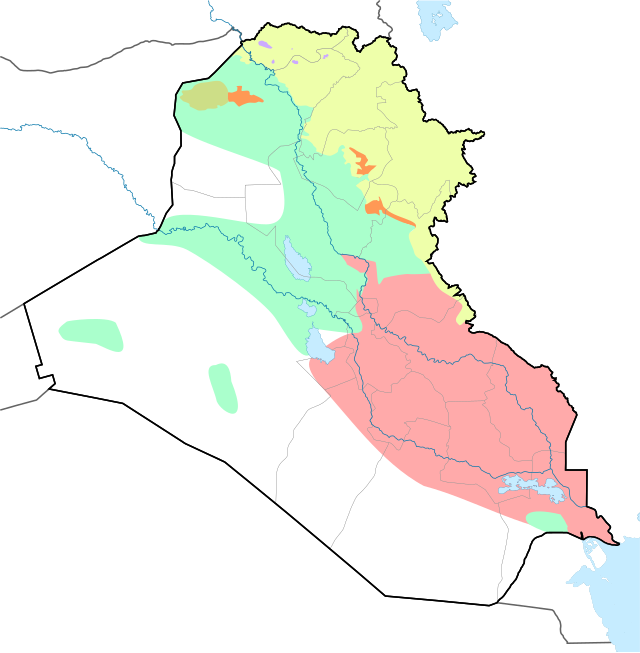Top Qs
Timeline
Chat
Perspective
Hypothetical partition of Iraq
Hypothetical disintegration of Iraq From Wikipedia, the free encyclopedia
Remove ads
The Partition of Iraq refers to the act of dividing the country into administrative divisions with either full or partial sovereignty.

Overview
A hypothetical partition of the first kind (full sovereignty) would render the country divided into several independent states, commonly proposed along ethnoreligious lines such as a tripartite separation based on the country’s main components; that is, the Shia, Sunnis and Kurds. This notion never gained significant support and the new Iraqi constitution adopted in 2005 defines Iraq as a "single, federal, independent, fully sovereign state", explicitly prohibiting secession and the division of sovereignty. However, the latter kind (partial sovereignty) was arguably the status quo in the form of loose confederalism, with Kurdistan Region possessing significant autonomy until the late 2010s when the Iraqi central government —with the aid of the Supreme Court— began to exert control over it and strip it of its autonomy.[1]
Remove ads
Salahuddin Conference
Summarize
Perspective
The current political system of Iraq was first proposed after the Gulf war by some members of the Iraqi opposition against Saddam Hussein's rule. In June 1992, a conference was held in Vienna, Austria, during which the Iraqi National Congress (INC) led by Ahmed Chalabi was created. Another conference held in October 1992, called the Salahuddin Conference, was held in Kurdish-controlled northern Iraq after the enforcement of the no-fly zones in northern Iraq. During the latter conference, the INC was expanded to include the two main Kurdish political parties; namely Kurdistan Democratic Party and Patriotic Union of Kurdistan as well as several other opposition parties. During the Salahuddin Conference, federalism coupled with decentralization was adopted as the official model and vision for a post-Saddam Iraq by INC, as a way to avoid a repeat of Saddam's tyranny, which was heavily centralized. As this came after the Kurds gained self-rule in northern Iraq, the model was seen as an acknowledgement of that newly gained autonomy, but at the same time an approach inherently opposed to Kurdish independence. The Shi'i Islamist parties, such as the Islamic Dawa Party, and Sunni Arab nationalist parties, opposed this approach of compromise for the reason that it would only serve to fragmentalize the country.
Remove ads
Post-2003
After the invasion of Iraq, contrary to the vision adopted during the Salahuddin Conference, the Kurdistan Democratic Party initially sought to gain international backing for an independent Kurdistan and separate entirely from Iraq, but when no such support surfaced, they practically conceded for reunification with Iraq —albeit under a loose confederal arrangement wherein the Kurdistan Region would (at least practically) enjoy a high degree of autonomy. However, flaws in the new Iraqi constitution hastily adopted in 2005, as well as the lack of necessary legislation that would solidify federalism, have allowed successive governments in Baghdad to resist federalization and instead increase central control.
See also
Notes
References
Wikiwand - on
Seamless Wikipedia browsing. On steroids.
Remove ads
